Nitric oxide plays a key role in many bodily functions. This molecule helps control blood flow, muscle contractions, and nerve signals. Many people want to boost their nitric oxide levels for better health.
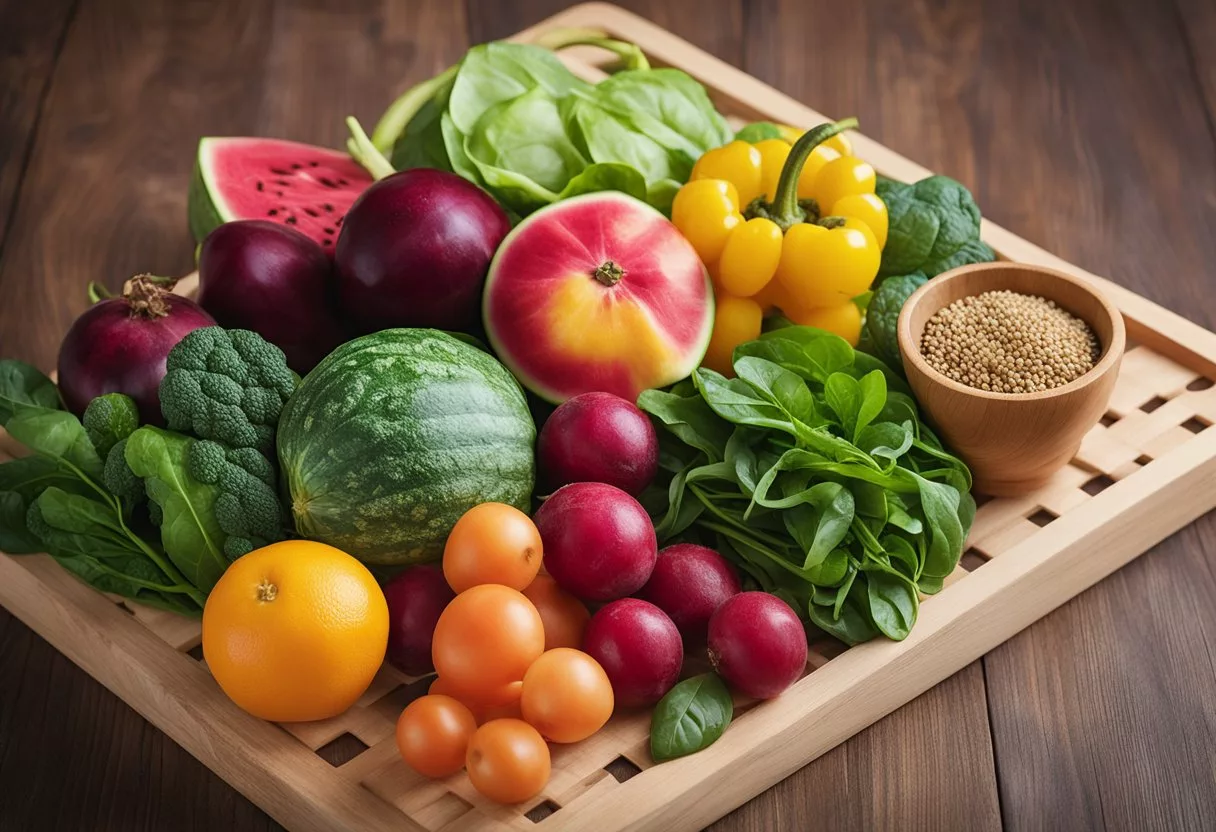
Eating certain foods can raise nitric oxide in the body. Some foods contain compounds that directly increase nitric oxide, while others provide building blocks the body uses to make more of this important molecule. A diet rich in nitric oxide-boosting foods may improve blood pressure, exercise performance, and overall wellness.
1) Beetroot
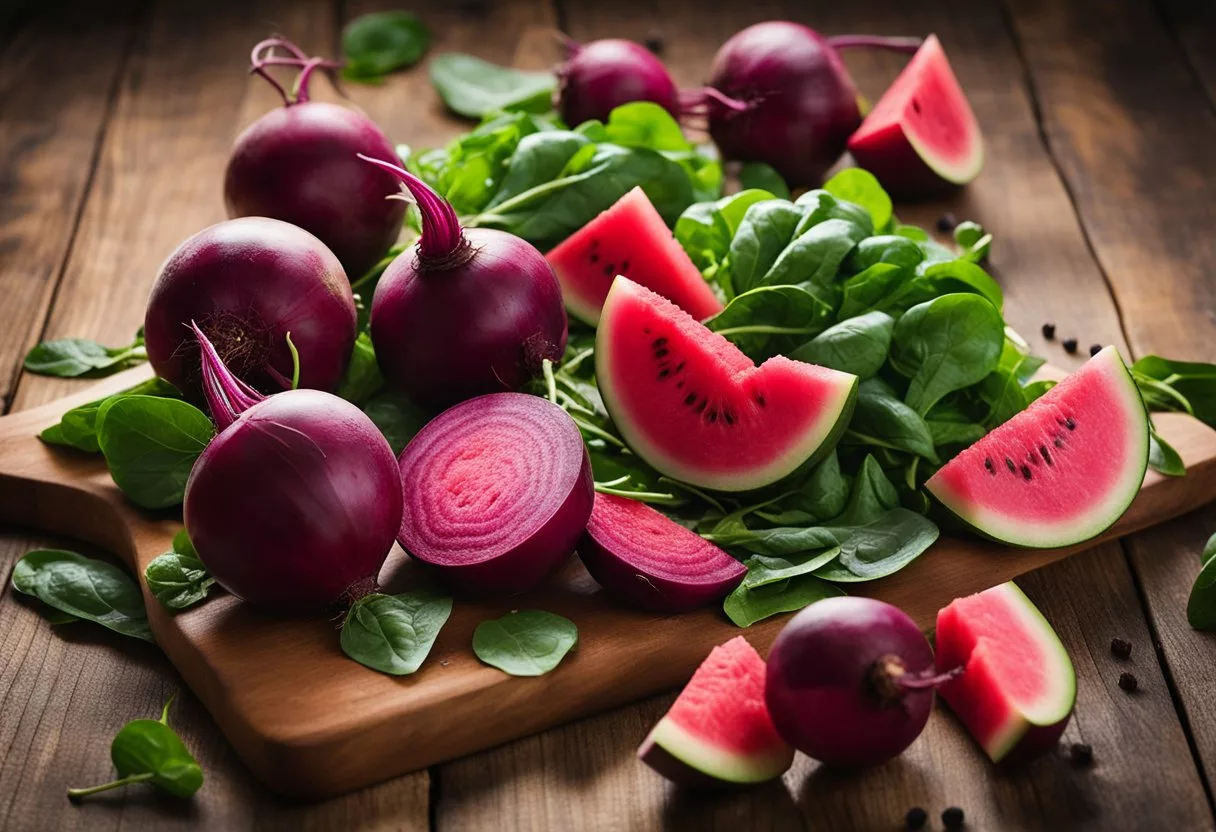
Beetroot is a top food for boosting nitric oxide levels in the body. This vibrant red vegetable is packed with dietary nitrates, which convert to nitric oxide.
Beetroot juice is especially potent. It provides 11.4 grams of dietary nitrates per liter[1], making it an excellent choice for increasing nitric oxide production.
Studies show that drinking beetroot juice can significantly raise nitric oxide levels. Just 3.4 ounces per day can make a noticeable difference.
The nitric oxide boost from beetroot may help improve blood flow and lower blood pressure. It can also enhance exercise performance and endurance.
Beetroot can be enjoyed in many ways. It can be juiced, roasted, or added to salads. For those who don’t enjoy the taste, beetroot supplements are available.
Regular consumption of beetroot or its juice may lead to sustained increases in nitric oxide levels. This can support overall cardiovascular health and athletic performance.
2) Spinach

Spinach is a nutritional powerhouse that can help boost nitric oxide levels in the body. This leafy green vegetable is packed with nitrates, which are converted to nitric oxide in the body.
A 100-gram serving of spinach contains about 2.86 grams of protein, 0.39 grams of fat, and 3.63 grams of carbohydrates. These nutrients support overall health and bodily functions.
Spinach is also rich in vitamin C[1], an important antioxidant that aids in nitric oxide production. This vitamin helps protect nitric oxide molecules from breaking down too quickly in the body.
The high potassium content in spinach further supports cardiovascular health. Potassium helps regulate blood pressure, which works in tandem with nitric oxide’s blood vessel-dilating effects.
Consuming spinach regularly can contribute to improved blood flow and circulation. This can benefit various bodily systems, including the cardiovascular and renal systems.
Spinach can be easily incorporated into diets through salads, smoothies, or cooked dishes. Its versatility makes it a convenient choice for those looking to increase their nitric oxide levels naturally.
3) Dark Chocolate
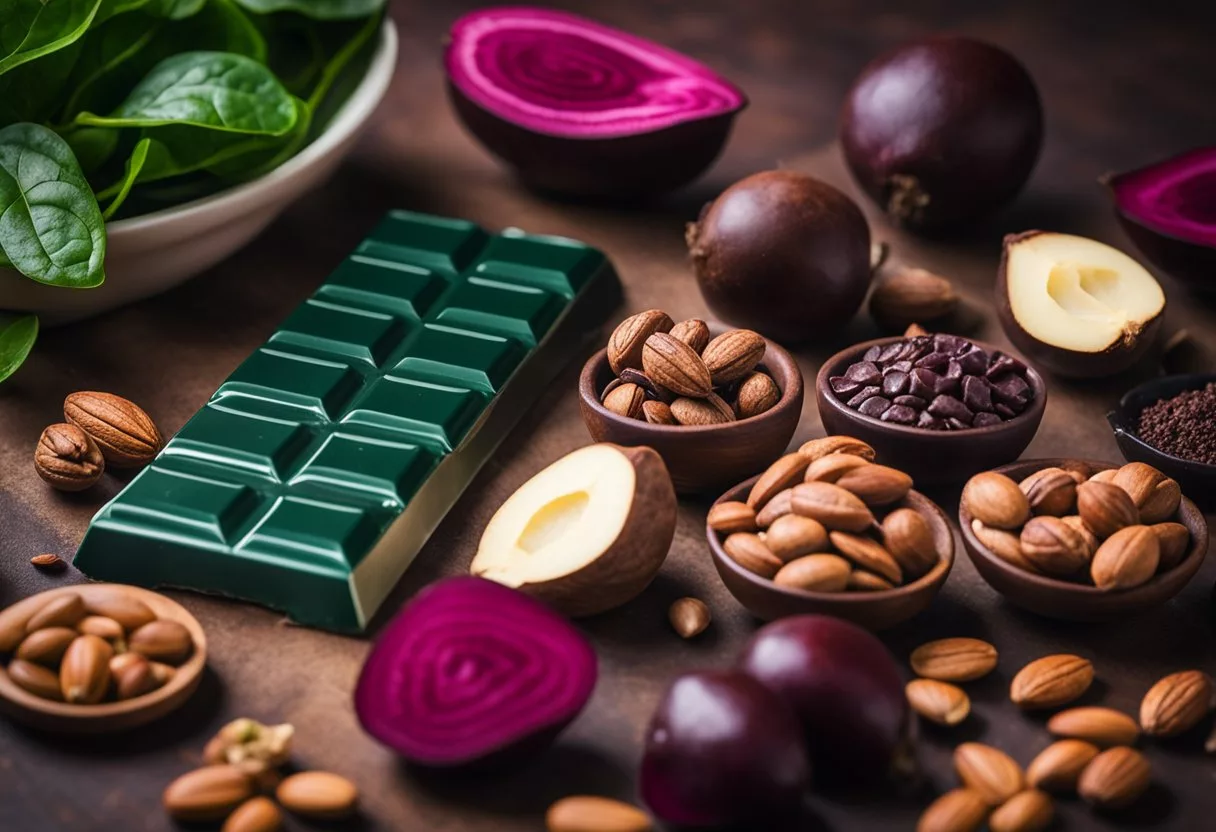
Dark chocolate is a tasty treat that can help boost nitric oxide levels in the body. It contains flavonoids, which are powerful antioxidants that increase nitric oxide in the bloodstream.
A small study found that eating 30 grams of dark chocolate daily can raise nitric oxide levels. This amount is about one ounce, or a few small squares of chocolate.
The higher the cocoa content in dark chocolate, the more beneficial it is for nitric oxide production. Look for dark chocolate with at least 70% cocoa content for the best effects.
Dark chocolate also offers other health benefits. It may help lower blood pressure, improve brain function, and reduce the risk of heart disease.
To get the most benefit, choose dark chocolate with minimal added sugar and avoid milk chocolate varieties. A small piece of dark chocolate each day can be a delicious way to support healthy nitric oxide levels.
4) Pomegranate
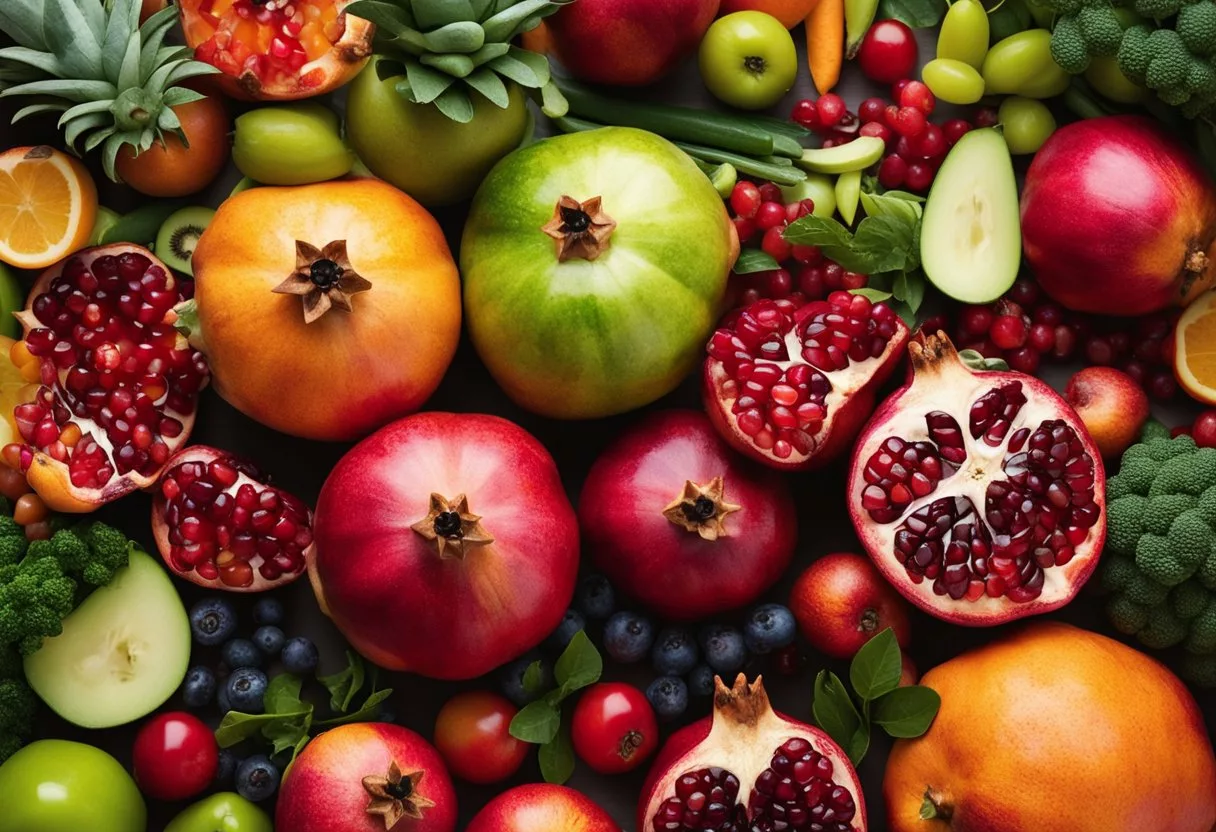
Pomegranates are a delicious fruit that can help boost nitric oxide levels in the body. These ruby-red fruits are packed with beneficial compounds that support heart health and circulation.
Pomegranates contain high levels of polyphenols, which are plant compounds that can increase nitric oxide production. These polyphenols help protect nitric oxide from breaking down too quickly in the body.
The juice of pomegranates is especially rich in nitrates. When consumed, these nitrates are converted into nitric oxide in the body. This process can help improve blood flow and lower blood pressure.
Eating pomegranate seeds or drinking pomegranate juice regularly may help maintain healthy nitric oxide levels. This fruit can be enjoyed on its own or added to salads, yogurt, or smoothies for a nutritious boost.
Research suggests that pomegranate juice may be more effective at increasing nitric oxide levels than many other fruit juices. Its deep red color is a sign of its high antioxidant content, which further supports cardiovascular health.
5) Garlic
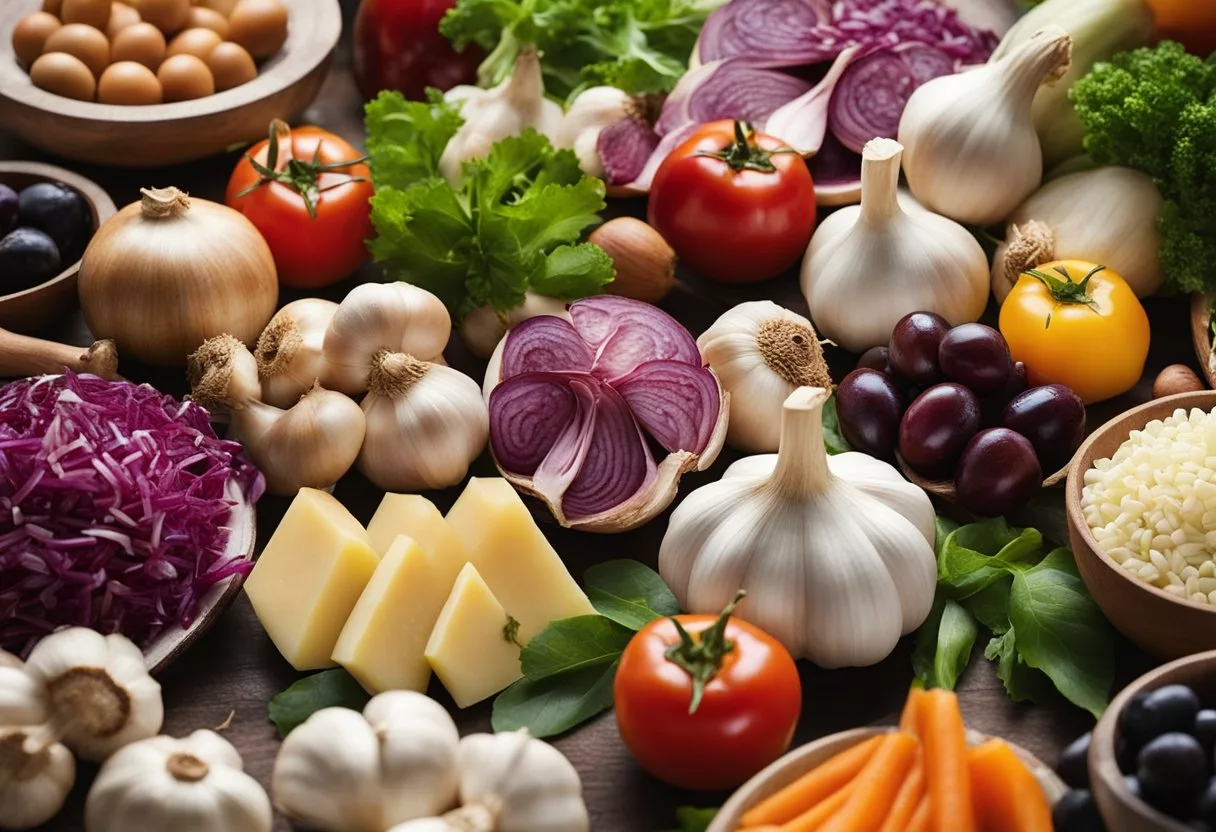
Garlic is a powerful food for boosting nitric oxide levels. This pungent bulb contains compounds that help increase the production of nitric oxide in the body.
One of the key components in garlic is allicin. When garlic is crushed or chopped, it releases this compound, which plays a role in stimulating nitric oxide production.
Eating garlic regularly can help improve blood flow and lower blood pressure. These effects are linked to its ability to enhance nitric oxide levels in the body.
Garlic can be added to many dishes for flavor. It can be eaten raw, cooked, or taken as a supplement. Raw garlic may have the strongest effects on nitric oxide production.
To get the most benefits, try adding minced garlic to salad dressings or incorporating it into cooked meals. Roasted garlic can also be a tasty and healthy addition to various dishes.
6) Watermelon
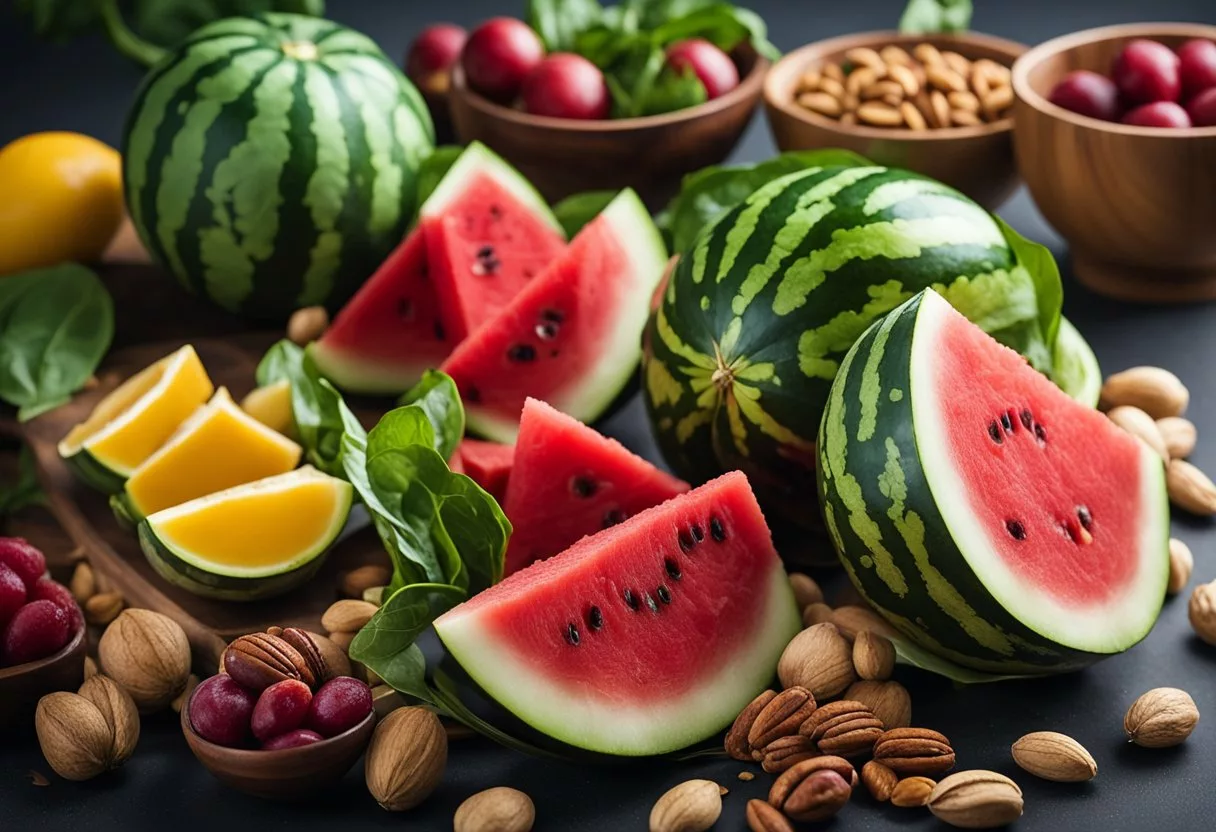
Watermelon is a tasty summer fruit that can help boost nitric oxide levels in the body. It contains an amino acid called citrulline, which plays a key role in nitric oxide production.
The body converts citrulline into another amino acid, arginine. Arginine then helps create nitric oxide. This process can improve blood flow and potentially lower blood pressure.
Watermelon is especially rich in citrulline. The highest concentration is found in the white rind, but the red flesh also contains this beneficial compound.
Eating watermelon or drinking watermelon juice may help increase nitric oxide levels. This can lead to better exercise performance and reduced muscle soreness after workouts.
Watermelon also provides other health benefits. It’s low in calories and high in vitamins A and C. The fruit contains lycopene, an antioxidant that may help protect against certain diseases.
For the best results, choose ripe watermelons. Look for ones that feel heavy for their size and have a yellow spot on the bottom where they sat on the ground.
7) Leafy Greens
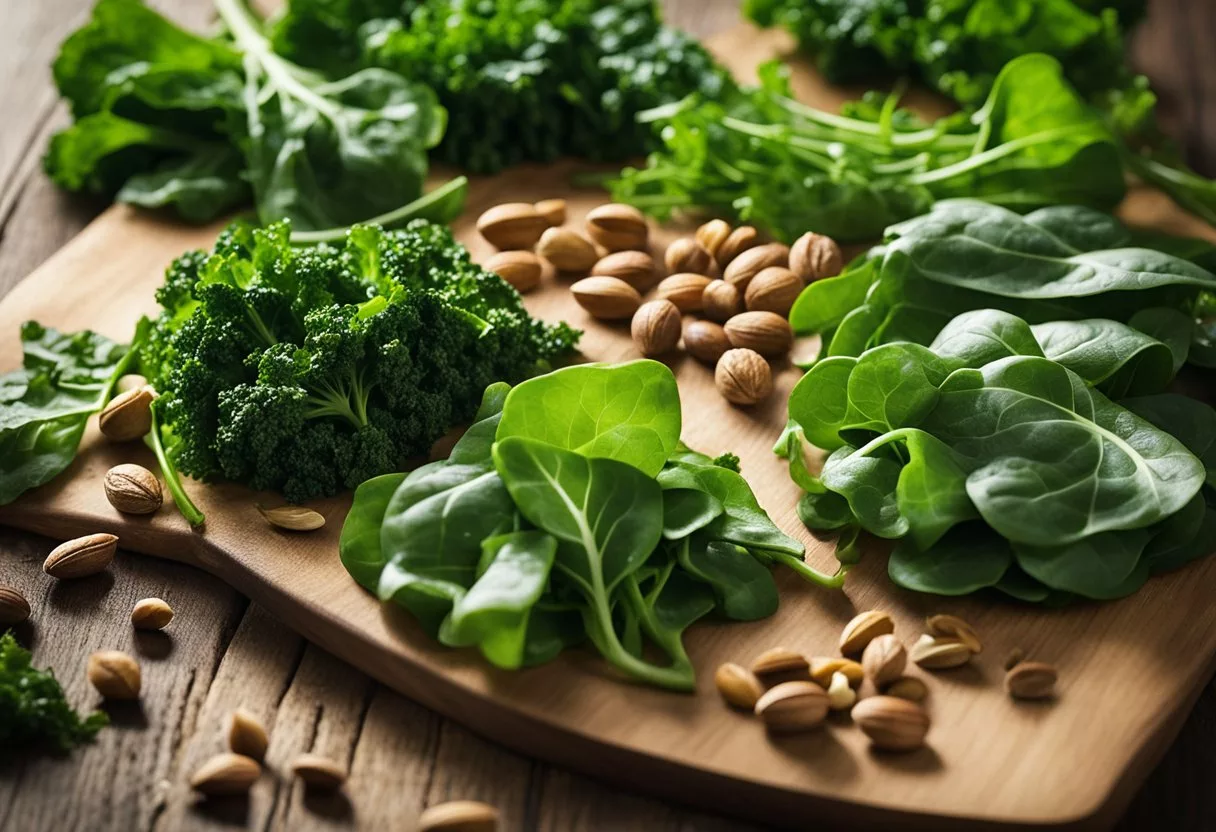
Leafy greens are a powerhouse of nutrients and can boost nitric oxide levels in the body. Vegetables like spinach, arugula, and kale are rich in nitrates, which the body converts to nitric oxide.
These greens also contain vitamins and minerals that support overall health. Spinach, for example, is packed with iron, calcium, and vitamin K.
Eating leafy greens regularly can help improve blood flow[2] and lower blood pressure. This is due to their ability to enhance nitric oxide production in the body.
Adding leafy greens to salads, smoothies, or as a side dish can be an easy way to incorporate them into one’s diet. It’s recommended to consume a variety of leafy greens to maximize their benefits.
Spinach provides protein, fat, and carbohydrates[3] in small amounts, making it a nutritious addition to meals. Other beneficial leafy greens include Swiss chard, bok choy, and collard greens.
8) Nuts and Seeds
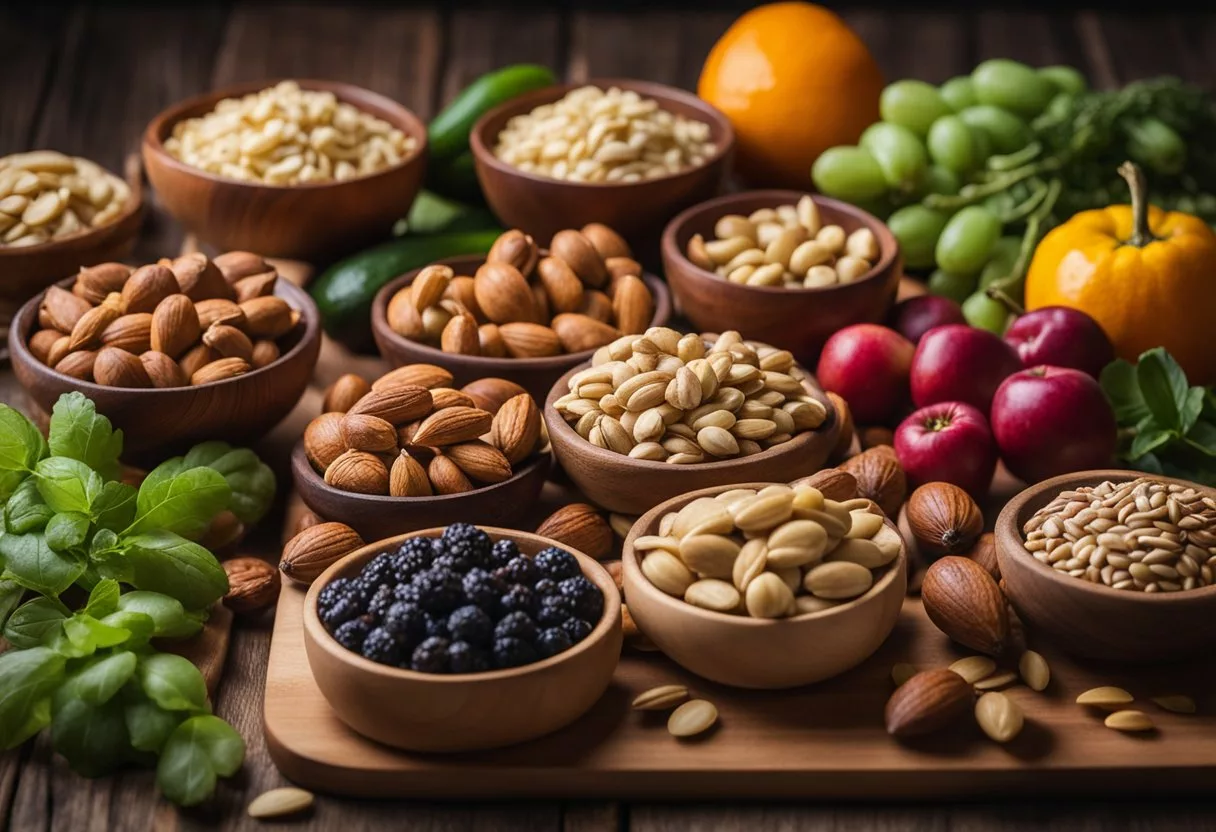
Nuts and seeds are great for boosting nitric oxide levels in the body. They contain arginine, an amino acid that helps produce nitric oxide.
Pistachios seem to have the strongest effect on lowering blood pressure. This makes them a top choice for improving nitric oxide production.
Walnuts, almonds, and pumpkin seeds are also good options. They provide healthy fats and protein along with their nitric oxide benefits.
Eating a handful of mixed nuts and seeds daily can help increase nitric oxide. This may improve blood flow and heart health.
Try adding nuts and seeds to salads, yogurt, or oatmeal. They make a tasty and healthy snack on their own too.
Nut and seed butters are another way to get these benefits. Spread them on whole grain toast or add to smoothies for an easy boost.
9) Citrus Fruits

Citrus fruits are a tasty way to boost nitric oxide levels in the body. Oranges, grapefruits, lemons, and limes are all good choices.
These fruits are high in vitamin C, which helps improve nitric oxide production. Vitamin C is an antioxidant that protects nitric oxide molecules from breaking down too quickly.
Citrus fruits can help increase blood flow throughout the body. This is important for heart health and overall wellness.
Eating citrus fruits regularly may lead to better exercise performance. The nitric oxide boost can help muscles get more oxygen during workouts.
It’s easy to add citrus to your diet. Try squeezing lemon juice over salads or drinking a glass of orange juice with breakfast. Grapefruit makes a refreshing snack on its own.
For the best results, eat citrus fruits fresh. The vitamin C content is highest when the fruit is raw and unprocessed.
10) Red Wine

Red wine contains compounds that can boost nitric oxide levels in the body. It is rich in polyphenols, especially resveratrol, which can help increase nitric oxide production.
Drinking red wine in moderation may improve blood flow and lower blood pressure. These effects are partly due to its ability to boost nitric oxide levels.
The antioxidants in red wine can also protect nitric oxide from breaking down too quickly. This allows it to have a longer-lasting effect on blood vessels.
It’s important to note that the benefits of red wine come from moderate consumption. Excessive alcohol intake can have negative health effects.
For those who don’t drink alcohol, grape juice can provide similar benefits. Grapes contain many of the same compounds that make red wine beneficial for nitric oxide production.
Benefits Of Nitric Oxide
Nitric oxide plays a key role in several bodily functions. It helps blood vessels relax and widen, improving circulation throughout the body.
Cardiovascular Health
Nitric oxide is vital for heart health. It helps lower blood pressure by relaxing blood vessel walls. This reduces strain on the heart and arteries.
Proper nitric oxide levels may lower the risk of heart disease. They can help prevent plaque buildup in arteries. This keeps blood flowing smoothly to the heart and other organs.
Nitric oxide also supports healthy cholesterol levels. It may help raise “good” HDL cholesterol while lowering “bad” LDL cholesterol. This balance is key for heart health.
Improved Exercise Performance
Athletes and fitness enthusiasts can benefit from optimal nitric oxide levels. It enhances exercise performance in several ways.
Nitric oxide increases blood flow to muscles during workouts. This provides more oxygen and nutrients, boosting endurance and power output.
It also speeds up recovery after intense exercise. Better blood flow helps remove waste products from muscles faster. This can reduce soreness and fatigue.
Some studies show nitric oxide may improve lung function during exercise. This allows for better oxygen uptake, especially during high-intensity activities.
How Nitric Oxide Works
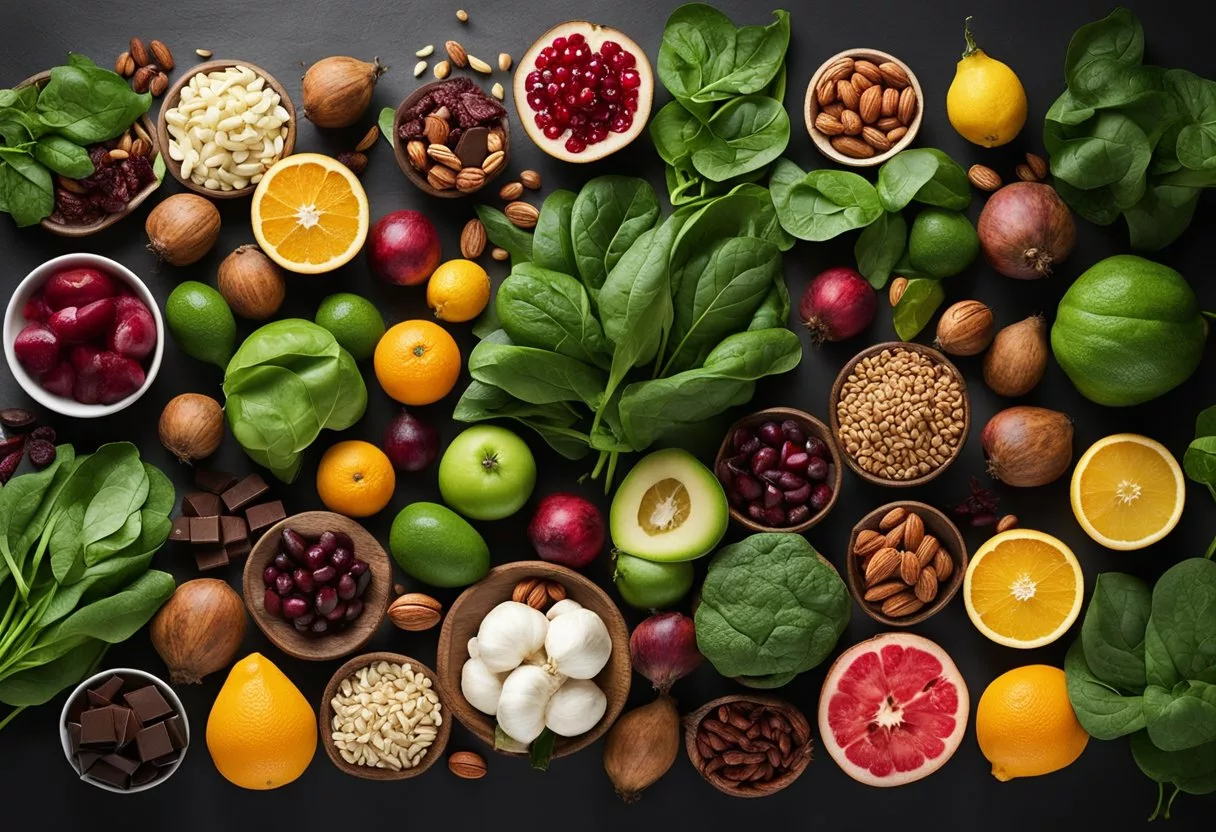
Nitric oxide is a key molecule in the body. It affects blood flow and blood vessel health. Let’s look at how it functions.
Role In Blood Flow
Nitric oxide helps blood vessels relax. This makes them wider. When blood vessels are wider, blood flows more easily.
Better blood flow means more oxygen and nutrients reach cells. This can help muscles work better during exercise. It may also lower blood pressure.
Nitric oxide is made in the inner lining of blood vessels. The body can make it from certain foods. Beets, leafy greens, and nuts are good sources.
Connection To Endothelial Function
The endothelium is the inner lining of blood vessels. It makes nitric oxide. Healthy endothelial cells keep making nitric oxide. This keeps blood vessels flexible.
When the endothelium works well, it helps:
- Control blood clotting
- Regulate immune function
- Balance blood vessel tone
Poor endothelial function can lead to heart problems. Eating foods that boost nitric oxide may help keep the endothelium healthy.
Exercise also helps endothelial function. It makes cells produce more nitric oxide. This can improve blood flow over time.
Dietary Sources Of Nitric Oxide Boosters
Certain foods contain compounds that can increase nitric oxide production in the body. These include foods high in nitrates and nitrites, as well as those rich in antioxidants.
Nitrates And Nitrites
Leafy greens are excellent sources of nitrates. Spinach, arugula, and kale top the list of nitrate-rich vegetables. Beets are another powerhouse, with both the root and leaves providing nitrates.
Celery and lettuce also contain good amounts of nitrates. Eating these veggies raw or lightly cooked helps preserve their nitrate content.
Some fruits contain nitrates too. Watermelon is a tasty option that’s high in citrulline, which the body converts to nitric oxide. Pomegranates are also beneficial, as they boost nitric oxide levels and help it last longer in the body.
Antioxidants
Antioxidants play a key role in supporting nitric oxide production. Berries like strawberries, blueberries, and raspberries are packed with antioxidants that help protect nitric oxide molecules.
Citrus fruits such as oranges, lemons, and grapefruits contain vitamin C, a powerful antioxidant. This vitamin helps the body make nitric oxide and keeps it stable.
Dark chocolate is another antioxidant-rich food that can boost nitric oxide levels. Choose varieties with at least 70% cocoa content for the most benefits.
Nuts and seeds, especially walnuts and pumpkin seeds, provide antioxidants and other nutrients that support nitric oxide production. They make for a healthy, convenient snack option.
Lifestyle Factors That Enhance Nitric Oxide Levels
Regular exercise is a key factor in boosting nitric oxide levels. Physical activity stimulates the body to produce more of this important molecule. Aim for at least 30 minutes of moderate exercise most days of the week.
Proper sleep habits also play a role. Getting 7-9 hours of quality sleep each night helps maintain healthy nitric oxide production. Stick to a consistent sleep schedule for best results.
Stress management techniques can positively impact nitric oxide levels. Practices like meditation, deep breathing, and yoga may help reduce stress and support nitric oxide synthesis.
Staying hydrated is crucial. Drinking plenty of water throughout the day aids in nitric oxide production and overall health.
Sunlight exposure in moderation can increase nitric oxide levels. Spend 10-15 minutes in the sun daily, but remember to protect your skin from excessive UV radiation.
Avoiding tobacco use is important. Smoking can decrease nitric oxide levels and harm blood vessels. Quitting smoking can help restore healthy nitric oxide production.
Maintaining a healthy weight supports optimal nitric oxide levels. A balanced diet and regular exercise can help achieve and maintain a healthy body mass index (BMI).
Frequently Asked Questions
Nitric oxide plays a key role in blood flow and health. Many foods can help boost nitric oxide levels naturally.
What are the top foods known to enhance nitric oxide production?
Beetroot is a top nitric oxide booster. It contains high levels of nitrates that convert to nitric oxide in the body. Spinach is another excellent source of nitrates. Dark chocolate[4] can also increase nitric oxide levels.
Which vegetables are considered rich in nitric oxide content?
Leafy greens like spinach, arugula, and kale are rich in nitrates. These veggies help the body make more nitric oxide. Beets and celery are also good vegetable sources.
Are there specific beverages that can elevate nitric oxide levels?
Beetroot juice is a potent nitric oxide booster. Pomegranate juice[5] may also help increase nitric oxide production. Red wine contains compounds that support nitric oxide synthesis.
How can one naturally augment their nitric oxide levels in the body?
Eating nitrate-rich foods is key. Regular exercise also boosts nitric oxide. Getting enough sunlight helps too, as UV rays stimulate nitric oxide production in the skin.
What are common signs of low nitric oxide and how can food help?
Low energy and poor circulation can signal low nitric oxide. Eating foods like beets, spinach, and garlic can help boost levels and improve these symptoms.
Can certain dietary changes combat nitric oxide deficiency effectively?
Adding more leafy greens and beets to the diet can help. Eating citrus fruits high in vitamin C supports nitric oxide production. Reducing processed foods and increasing whole foods can also make a difference.
References
- 13 Healthy Foods to Increase Your Nitric Oxide Levels. https://www.lifeextension.com/wellness/antioxidants/nitric-oxide-foods Accessed October 25, 2025
- The Power of Leafy Greens: Unlocking the Benefits of Nitric Oxide for. https://plantstrong.com/blogs/news/the-power-of-leafy-greens-unlocking-the-benefits-of-nitric-oxide-for-heart-health Accessed October 25, 2025
- The Best Nitric Oxide Foods to Increase Blood Flow and Boost Performance. https://barbend.com/best-nitric-oxide-foods/ Accessed October 25, 2025
- The 10 Best Foods to Boost Nitric Oxide Levels. https://www.healthline.com/nutrition/nitric-oxide-foods Accessed October 25, 2025
- 10 Healthy Foods to Boost Nitric Oxide and Why You Need It. https://www.webmd.com/diet/healthy-foods-nitric-oxide Accessed October 25, 2025
